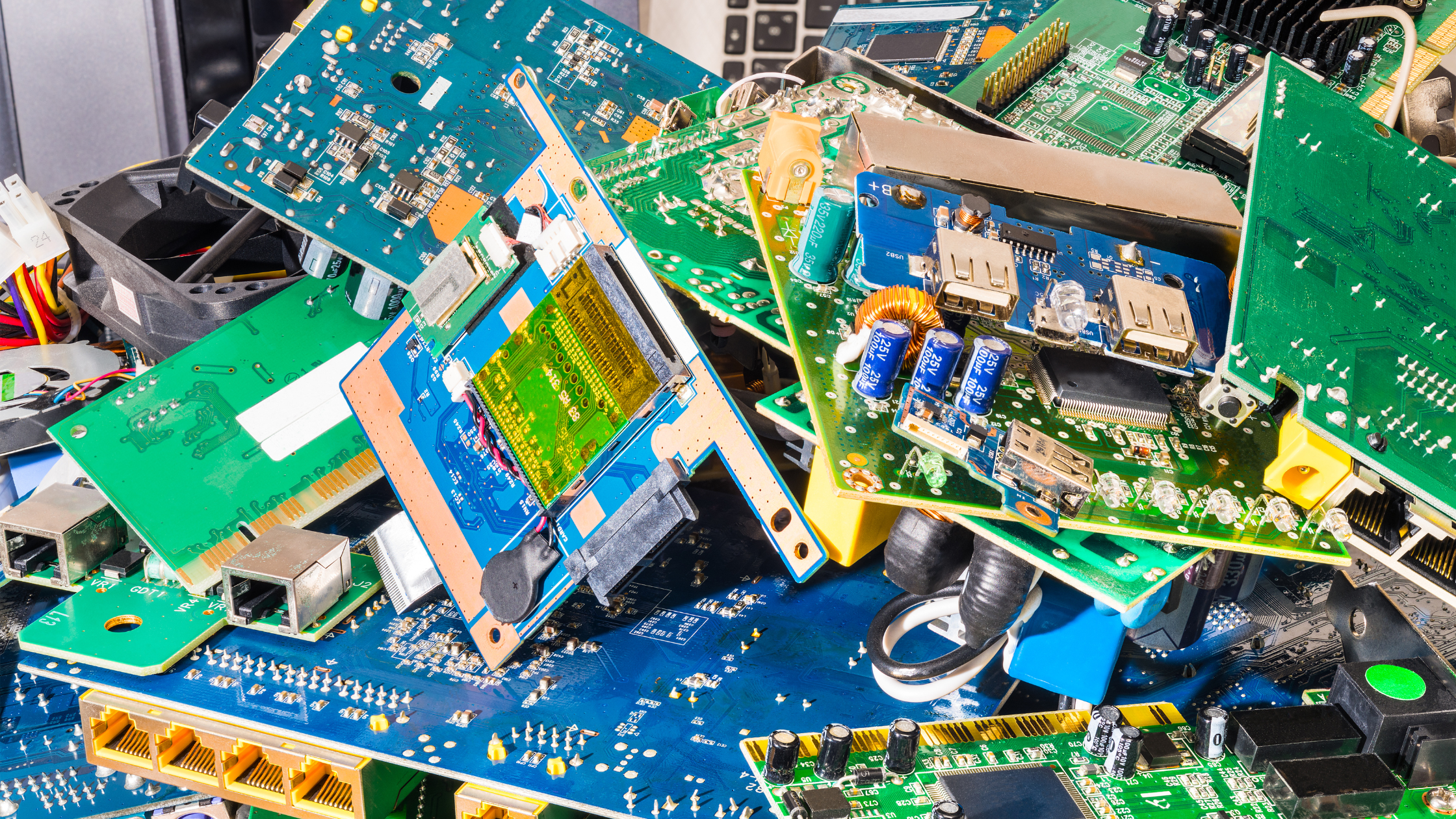Earth Day made its first triumphant appearance in April 1970. Decades ago, we didn’t have strong environmental regulations put into place by the EPA (Environmental Protection Agency), which works toward protecting human health and the environment. Hence, Gaylord Nelson, the senator of Wisconsin at the time, took it upon himself to push this powerful idea of cherishing our one and only planet by making it a national priority. Thus, Earth Day was born. We have made tremendous leaps and bounds in environmental regulations since then, but we have also caused much environmental damage along the way — especially when it comes to e-waste. E-waste is the term used to describe all electronic products that have been discarded because they are no longer needed and have neared the end of their lifespan. In regards to e-waste, action needs to be taken now. In this article, we’ll go over the threats of e-waste and how we can work together toward a solution. We’ve only got one home after all — Planet Earth.
E-Waste Is a BIG Contributor to Greenhouse Gasses
The increase in greenhouse-gas emissions are responsible for the high frequency of severe weather patterns such as tornadoes, hurricanes, and snow storms. Climate change has been on our national agenda for many decades now, and with the Paris Agreement, our global responsibility has been to curb the emissions of greenhouse gasses. Although we have a strict criteria set to meet, we are falling short of our goals. Greenhouse gasses are still on the rise and they are contributing to global warming.
A study conducted by University of California Irvine discovered that e-waste increased nearly 53% between 2014 and 2020. It’s projected that by 2030, e-waste alone will be responsible for releasing 852 million metric tons of carbon dioxide into the atmosphere, which thwarts our goal of reducing global carbon emissions.
Contamination of Water Sources
Water is an essential ingredient we need for our survival. Unfortunately, e-waste contaminates oceans, lakes, streams, and rivers. E-waste contains heavy metals such as lead and arsenic, and when they are disposed of improperly, they end up leaching into our water sources, resulting in acidification and widespread illnesses.
The species that call the oceans their home are not well suited to thrive amongst heavy contaminants. This can slowly lead to the destruction of certain species of fish and can have a negative impact on biodiversity and the collapse of food chains — including ones humans are a part of. This is another reason why we should be deeply concerned about e-waste; it is a global responsibility to preserve, heal, and protect the biodiversity of our planet.
E-Waste Contaminates Our Soil
Trees, crops, and other plants give us the vital oxygen that we depend on, and they even provide us with the sustenance that we need to survive. Unfortunately, plants are affected by the consequences of e-waste.
The contaminants that e-waste deposits into the land are readily absorbed by the soil, affecting soil composition and pH levels. Crops can be especially vulnerable to these contaminants, resulting in crop losses. As a result, the farmlands of the future may not be able to produce as many viable crops, leading to the price inflation of many vegetables, fruits, grains, and even animal products. E-waste contamination has an enormous impact on our very own food production.
E-Waste Impacts the Health of Communities
The threat of e-waste is a modern humanitarian crisis. The World Health Organization (WHO) has announced that e-waste currently negatively impacts the health of millions of children and their parents, mainly due to informal e-waste recycling centers. For this very reason, the proper disposal of e-waste will not only help preserve the health of our planet, but it will save lives. To say that this is a call to action is an understatement. Awareness is the first step toward a solution. Just as importantly, a practical solution is vital toward curbing the threat of e-waste. ITAD is one such solution which serves as a corporate sustainability strategy we can implement today.
ITAD as an Environmental Solution
ITAD, short for IT asset disposition, is a means of disposing electronic devices and other IT hardware in ways that are environmentally safe. This service may be provided by companies and government organizations. Many companies rely on a wide variety of IT equipment on a day-to-day basis, and it’s important to keep in mind that once a piece of IT equipment reaches its life span, it needs to be disposed of properly. Big tech companies, manufacturers of smartphone devices in particular, are known for increasing the volume of electronic products brought into the marketplace without providing any e-waste disposal solutions for their customers. Once your IT equipment has reached the end of its life, you may want to consider utilizing ITAD proper disposal. Not only is it good for a business sustainability strategy, it’s also good for the planet and protects the health of our communities. Have questions about ITAD? Contact us today to dispose of your IT assets in a safe and environmentally responsible way that complies with data privacy laws and environmental regulations.



